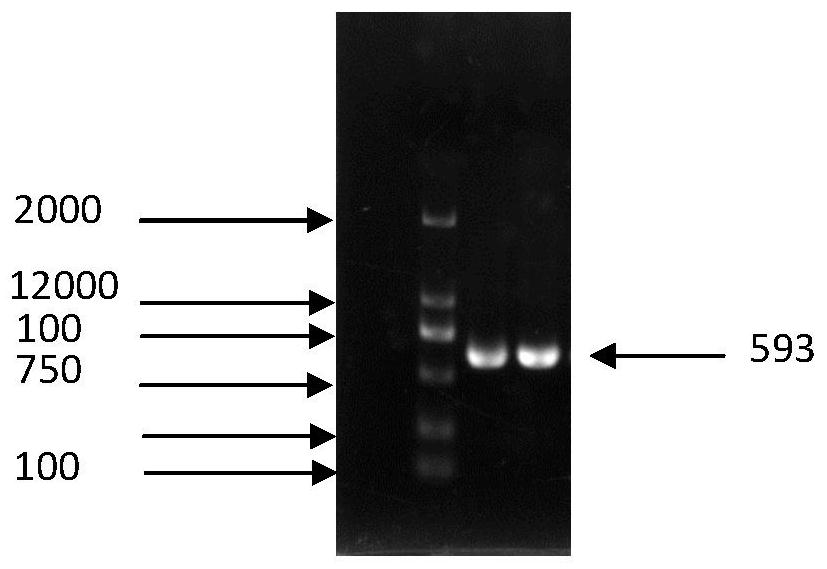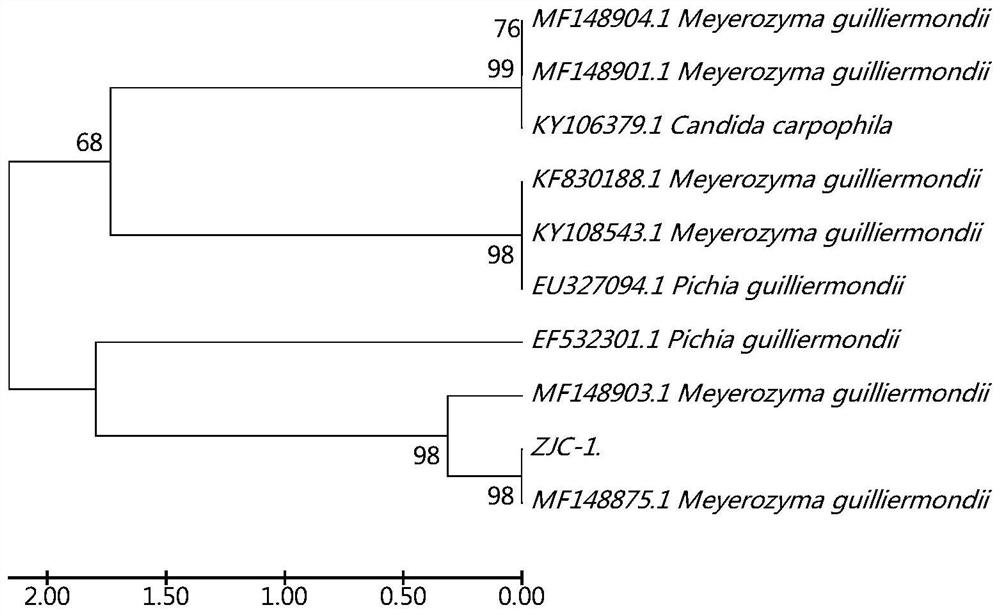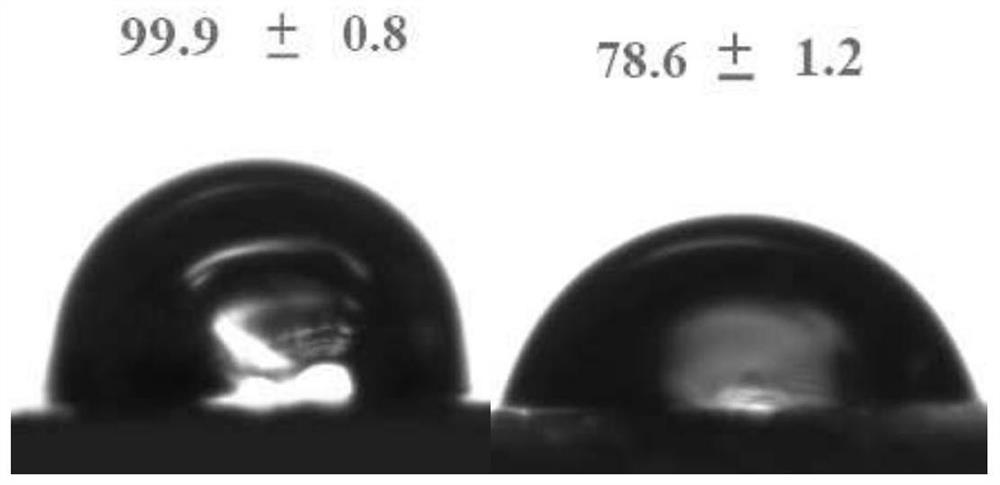A strain of Pichia monteritima that degrades polyethylene and produces alkanes
A polyethylene, yeast technology, applied in the direction of microbe-based methods, microbes, microbes, etc.
- Summary
- Abstract
- Description
- Claims
- Application Information
AI Technical Summary
Problems solved by technology
Method used
Image
Examples
specific Embodiment approach 1
[0015] Specific embodiment 1: Pichia pastoris MeyerozymaguilliermondiiZJC-1, which can degrade polyethylene in this embodiment, is preserved in the General Microbiology Center (CGMCC) of China Microbial Culture Collection Management Committee, and the preservation address is No. 1, Beichen Road, Chaoyang District, Beijing Court No. 3, the deposit date is December 17, 2018, and the deposit number is CGMCC No: 16956.
[0016] In this embodiment, Pichia guilliermondii ZJC-1 is obtained by screening from the intestinal fluid of the larvae of the mellonella mellonella, and is identified according to the following method.
[0017] Molecular biological identification of the screened strains: Inoculate Meyerozyma guilliermondii ZJC-1 in YPD liquid medium, culture in a constant temperature shaking incubator at 30°C at 120r / min for 16-24h, take 2mL of the bacterial liquid and centrifuge at 8000rpm to collect the bacterial cells , Genomic DNA was extracted according to the OMEGA HP Funga...
PUM
 Login to View More
Login to View More Abstract
Description
Claims
Application Information
 Login to View More
Login to View More - R&D
- Intellectual Property
- Life Sciences
- Materials
- Tech Scout
- Unparalleled Data Quality
- Higher Quality Content
- 60% Fewer Hallucinations
Browse by: Latest US Patents, China's latest patents, Technical Efficacy Thesaurus, Application Domain, Technology Topic, Popular Technical Reports.
© 2025 PatSnap. All rights reserved.Legal|Privacy policy|Modern Slavery Act Transparency Statement|Sitemap|About US| Contact US: help@patsnap.com



